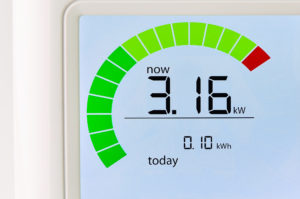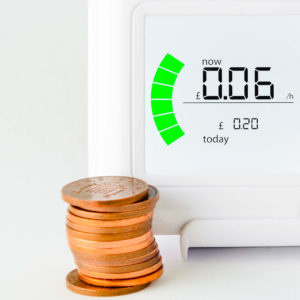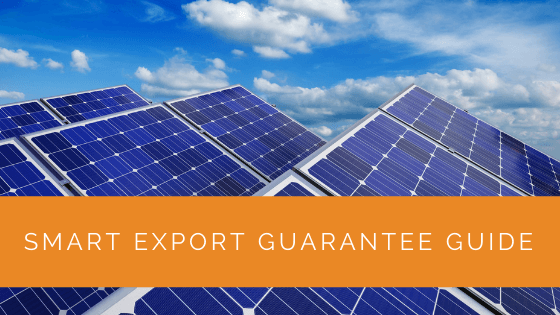Do you generate electricity from renewable sources at home? We have something interesting for you!
The Smart Export Guarantee (SEG) is a government-backed initiative launched on 1 January 2020. This initiative ensures that small-scale generators in England, Wales, or Scotland get paid for the electricity they export to the National Grid.
The support mechanism was designed to help the UK reach net-zero carbon emissions by 2050. It essentially replaces the Feed-in Tariff (FiT) scheme.
This article will walk you through everything you need about the SEG scheme, from eligibility to the Smart Export Guarantee tariff rate.
Contents
- 1 Key Takeaways
- 2 Smart Export Guarantee (SEG) Explained
- 3 Types Of SEG Tariffs
- 4 Smart Export Guarantee Tariff Comparison
- 5 Who Is Eligible To Receive SEG Payments?
- 6 Are SEG And Feed-in tariffs the Same?
- 7 Should You Change To The SEG If You Already Have The FiT?
- 8 Case Study: Maximising Renewable Energy Returns with the Smart Export Guarantee
- 9 Expert Insights From Our Solar Panel Installers About the Smart Export Guarantee
- 10 Discover the Power of Solar with Solar Panels Network
- 11 Closing Thoughts
Key Takeaways
- The Smart Export Guarantee (SEG) is a UK government initiative launched in 2020 to pay small-scale renewable energy generators for exporting electricity to the National Grid, aiming to support the UK’s goal of reaching net-zero carbon emissions by 2050.
- The SEG covers various renewable energy technologies such as solar PV, wind power, micro combined heat and power (CHP), hydropower, and anaerobic digestion, provided they meet certain criteria, including having a smart meter for monitoring and reporting electricity exports.
- SEG payments come in two main types: fixed and flexible rates, with various energy companies offering different tariffs. The rates vary, but a fair offering is estimated between 5p to 6p per kWh of exported electricity.
Smart Export Guarantee (SEG) Explained
The SEG presents export tariffs for several small-scale energy-generating technologies that do not produce high carbon emissions. It was designed as a means to persuade homeowners in the UK to switch to renewable electricity.
The SEG covers various renewable energy generation techniques, such as solar, wind, hydropower, micro combined heat and power or micro CHP, and anaerobic digestion. You also need a smart meter if you generate electricity at home by any of these modes. To qualify, systems must generally have a capacity of up to 5MW, and the installation must be certified under the Microgeneration Certification Scheme (MCS) or an equivalent.
A smart meter is an export meter that takes measurements every 30 minutes and sends the half-hourly readings to your SEG licensee. You then receive some tariffs based on your contribution to the National Grid.
Let us discuss the various renewable energy generation technologies that the SEG covers.
Solar Photovoltaic Systems
Solar panel systems are undoubtedly one of the most popular methods for generating low-carbon energy. Regardless of the kind of solar PV system you own, you qualify for the SEG tariff as long as the system creates less than 5MW of electricity.
However, you must ensure your solar installation has the MCS certificate (Microgeneration Certification Scheme). For systems smaller than 50 kW, you must prove that the installer is MCS certified. Since the most common sizes for domestic solar panels are 4kW, 5kW, or 6kW, this rule applies to all of them.
The excess energy produced gets stored in the battery when you use solar battery storage. The SEG is an export tariff, which means you will only receive money for the energy you export to the grid. Therefore, storing energy in solar batteries will not be of much use.
It is only in certain instances that the SEG scheme covers solar storage. You need to consult your licensee to understand the situation better.

Wind Power
Wind energy has been a significant contributor to electricity generation in the UK. It is often generated in large wind farms, but viable options for harnessing wind power at home are also available.
To qualify for SEG payments, you need to be mindful of the following conditions:
- You require an installer and installation certification for systems producing less than 50 kW.
- You require proof of the installation certification for systems producing between 50kW and 5MW.
Micro Combined Heat And Power (CHP)
Micro CHP is a system that generates electricity and heat simultaneously. While it is not always a carbon-free energy source, it reduces emissions since it accomplishes two tasks together.
CHP is becoming quite common since it helps businesses reduce energy costs and environmental impact.
Micro CHP systems qualify for SEG tariffs if their capacity is below or equal to 50kQ, and you can provide an installation and installer certificate.
Hydropower
Hydropower refers to generating electricity from water. It is not a common renewable electricity source and is mostly generated in large-scale systems. However, it can be used on the domestic level too.
The UK has been a pioneer in the hydroelectricity industry globally. This technology is especially common in the Scotland and Wales region.
To receive SEG payments for hydropower, you’ll have to present an installation certificate. Unlike with other renewable energy sources, you will not have to present any proof about your installer.
Anaerobic Digestion
Anaerobic digestion is the process by which organic material is broken down to produce biogas. This biogas is not emissions-free, but it is a renewable energy source.
Digesters employ microorganisms such as bacteria to disintegrate matter like wastewater, manure, and food waste. When the organisms and matter interact in a no-oxygen environment, they create natural gas, mostly methane.
While this process might not be very common in households, it is perfect for farmers.
The SEG scheme treats hydropower much like anaerobic digestion. Regardless of the energy you generate, you only need to present an installation certificate, not an installer certificate. However, you must also provide documents proving that your system complies with SEG guidelines.
Types Of SEG Tariffs
SEG payments can broadly be divided into two tariffs: fixed and flexible.
Fixed Rate
These SEGs pay a fixed amount per kWh of electricity sent to the grid. The amount does not change, regardless of when the electricity is returned to the grid.
Today, most SEG licensees follow this system.
Flexible Rate
These SEGs pay you different amounts depending on how useful the electricity is to the system at a given time.
You would receive more pay for energy exported to the grid at high demand and comparatively lower pay for sending energy back to the grid during off-peak hours.
Multi-Rate
Often, companies offer a multi-rate system, wherein different rates are fixed for the energy you export to the grid at different times, like weekdays and weekends or days and nights.
Smart Export Guarantee Tariff Comparison
According to the Solar Trade Association, a fair offering is estimated between 5p to 6p per kWh to households. However, not all energy suppliers are on the same page.
Here’s a quick rundown of the offers by different energy companies.
Social Energy SEG Tariff
Social Energy provides the best value export tariff for exporters and is a certified provider. Its “Smarter Export” tariff offers customers 6p per kWh, and you can expect fluctuations based on market conditions.
According to their website, you require a solar battery and hub from Social Energy to be eligible for the SEG tariff. However, it would be best if you were in supply with Social Energy for electricity.
A major benefit of Social Energy is that it uses advanced AI technology to help maximise earnings from electricity exported back to the grid. Moreover, they offer competitive prices despite market fluctuations.
All you need is a smart meter that will export half-hourly readings.
Octopus Energy SEG Tariff
You might have heard of the “Outgoing Octopus” tariff from Octopus Energy. The export tariff offers two options for customers – Fixed and Agile.
Under the Fixed tariff, you are guaranteed 5.5p per kWh meters export, whereas the Agile tariff meets half-hourly prices with day-ahead wholesale rates.
Octopus Energy has such a large customer base that they can even sell your energy to a neighbour, making them probably the first peer-to-peer energy trader.
If you wish to receive the SEG tariffs, your solar panel system must be certified. Additionally, it would be best to have a smart meter that exports meter readings every half hour.

E.ON SEG Tariff
E.ON has a “Fix & Export Exclusive v1” tariff plan offers customers 5.5p per kWh. Once you apply for this tariff, you will receive your Export MPAN (meter point administration number), which helps identify your export meter and calculates how much energy you export.
The tariff rate is fixed in this case, and the payment is made in 12-month fixed cycles.
With a certified solar panel system and a smart meter that sends the half-hourly meter reading, customers must also have a generation unit with a capacity stretching to 5MW. Customers will receive their payments according to the 12-month fixed cycle.
Bulb Energy SEG Tariff
Bulb Energy provides a competitive tariff, known as “Export Payments”, that offers 5.38p per kWh for metered export.
Unlike other cases where meter readings are automatically sent to the energy supplier, Bulb Energy reaches out quarterly to inquire about your on-site meter reading.
You do not have to be a Bulb member to sign up for their SEG tariff. Moreover, if you wish to move to Bulb for your energy supply, they’ll cover your exit fee for the previous supplier.
You can receive the tariff if you have a certified solar panel system with a capacity of up to 5MW and a smart meter.
OVO Energy SEG Tariff
OVO Energy has a plan called the “OVO SEG Tariff” that offers customers 4p per kWh for exporting renewable electricity. If you do not have an Export MPAN, you should acquire it to apply for the tariff.
The contract comes into force as soon as you have the MPAN. According to the agreement, manual quarterly readings from the export meter will be sent to the supplier. You can, however, choose to provide automated remote readings.
A smart meter will have to be installed to send the half-hourly meter reading, and your certified solar panel system should have a capacity of 5MW to qualify for the tariff.
Scottish Power SEG Tariff
The “Smart Export Variable Tariff” is a popular Scottish Power tariff name. It offers customers 4p per kWh for energy exported to the grid. The name lets us know that the tariff rate is variable and may fluctuate occasionally.
If you want to apply for these SEG tariffs, you need an MPAN and a certified solar panel system. Moreover, the solar energy generation unit should have a capacity of up to 5MW.
Under this agreement, you can opt only for the SEG export tariff and pick an alternative energy supplier. Moreover, you receive your payment every six months.
British Gas SEG Tariff
The “Export and Earn Flex” from British Gas offers customers 1.5p per kWh for every unit of renewable electricity they export to the grid.
As we can see from the tariff name, the rate is variable, meaning there is no fixed exit fee or end date. As soon as customers accept the plan, they are expected to show British Gas their initial meter reading. Consequently, meter readings will be taken every six months via email or phone.
The energy supplier will make export payments once every six months. To apply for this tariff, you must have an export meter that records half-hourly readings and a certified solar panel system. Additionally, the solar panels’ generation unit should have a maximum capacity of 5MW.
Utility Warehouse SEG Tariff
Utility Warehouse provides customers SEG tariffs at 2p per kWh for every unit of electricity exported. As soon as you get accepted to the plan, you must present your first meter reading to the energy supplier.
Consequently, readings will be taken every quarter. The tariff is based on a variable rate, so you can occasionally expect fluctuation. Utility Warehouse will notify customers about each payment.
If you wish to apply for the tariff, you need an export meter that records meter readings every 30 minutes and a certified solar PV system. Additionally, the solar panel unit should have a capacity of up to 5MW, and you must have an Export MPAN.
EDF Energy SEG Tariff
EDF Energy isn’t one of the most well-paying energy companies, offering just about 1.5p per kWh for every unit of renewable electricity.
As soon as you get accepted to the plan, you’ll have to provide the energy supplier with your initial meter reading. Following that, the readings have to be taken every quarter until the plan expires.
If you want to get on this plan, you need an MPAN, an export meter, and a certified solar PV system with a maximum capacity of up to 5MW.
The “Export + Earn” tariff plan is for 12 months, after which the payments will stop if you do not sign a new contract.

Who Is Eligible To Receive SEG Payments?
There are certain qualifications that customers need to meet if they wish to apply for SEG.
Let us glance over the eligibility criteria:
- Be located in the United Kingdom
- Have an MCS-certified installation
- Generate renewable energy at home through any one of the following – hydro, micro combined heat, solar PV, wind, or anaerobic design.
While a smart meter is not necessary, it is good to have an export meter that ensures you receive accurate payments.
Additionally, there are a few documents required for applying to the scheme:
- Ownership proof
- Application form from the SEG licensee’s website
- Additional form for anaerobic digestion
Once submitted, you can expect your application to be processed in 28 days.
Are SEG And Feed-in tariffs the Same?
Feed-in Tariff is an initiative under which households producing renewable electricity are paid. However, it was closed to fresh applicants after the end of March 2019.
FiT payments consist of two parts: the generation tariff and the export tariff. The former was a payment for the total electricity generated calculated per unit. Meanwhile, the export tariff was a payment for the electricity units exported to the National Grid.
The SEG and Feed-in Tariff (FiT) differ in several ways. While FiT payments were government-regulated, SEG payments are set by energy suppliers, offering more flexibility but potentially less generous rates. The SEG only compensates for actual energy exported to the grid, whereas FiT assumed a portion of energy was self-consumed and compensated the rest.
Although the SEG and Feed-in Tariff (FiT) might appear similar, the SEG can be considered FiT’s successor. The government distributed the Feed-in Tariff (FiT) payments. However, energy suppliers pay out the SEG. Moreover, the rate for FiT payments was set by Ofgem, while the energy suppliers set the SAG tariff rates.
Should You Change To The SEG If You Already Have The FiT?
The FiT rates are much more generous as compared to SEG tariffs. If you’re already subscribed to receive FiT payments, you can continue until the end of your contract unless you opt to receive FiT export payments.
It is highly unlikely that you will earn as much from SEG tariffs as you will with FiT. It happens because SEG tariffs only pay customers for the amount of renewable electricity exported. On the other hand, FiTs estimate your export to be half of the total energy generated by your system.
Case Study: Maximising Renewable Energy Returns with the Smart Export Guarantee
Background
At Solar Panels Network, our mission is to empower homeowners to transition to renewable energy sources while benefiting financially. The introduction of the Smart Export Guarantee (SEG) provided a new opportunity for us to help our clients maximise their returns on solar investments. This case study details our work with a residential client looking to leverage the SEG for their solar PV system.
Project Overview
Our client, a family in a suburban home, had recently installed a 5kW solar PV system. They were interested in understanding how they could maximise the financial benefits of their system beyond just reducing their electricity bills. We guided them through the SEG process, ensuring they understood the scheme’s benefits and how to optimise their solar energy output for maximum returns.
Implementation
- System Assessment: Conducted a thorough evaluation of the client’s solar PV system, including its capacity, current energy production, and potential for export.
- SEG Registration: Assisted the client in registering for the SEG with their chosen energy supplier, ensuring all necessary documentation, such as MCS certification, was in place.
- Smart Meter Installation: Facilitated the installation of a smart meter to accurately measure and report the electricity exported to the National Grid.
- Tariff Selection: Advised on selecting a flexible SEG tariff to take advantage of fluctuating energy prices, maximising returns during peak demand periods.
Results
- Increased Revenue: The client saw an increase in revenue from exporting excess electricity, with earnings ranging between 5p to 6p per kWh, depending on market conditions.
- Energy Cost Savings: In addition to the income from the SEG, the client experienced significant savings on their electricity bills due to the self-consumption of generated solar energy.
- Sustainable Contribution: The household’s transition to renewable energy contributed to reducing their carbon footprint, aligning with broader environmental goals.
- Educational Impact: The client gained a deeper understanding of energy management, which encouraged them to explore further energy efficiency improvements in their home.
Summary
The Smart Export Guarantee proved to be an invaluable tool for our client, enabling them to monetise their excess solar energy and significantly offset their investment in renewable technology. The project highlighted the importance of comprehensive support and education in navigating new energy policies. As the UK progresses towards its net-zero goals, initiatives like the SEG will be crucial in promoting renewable energy adoption and helping households realise the financial benefits of sustainable living.
Expert Insights From Our Solar Panel Installers About the Smart Export Guarantee
The Smart Export Guarantee is a fantastic initiative that incentivises households to generate renewable energy. By exporting excess energy to the National Grid, homeowners not only contribute to a sustainable future but also earn from it. It’s a win-win situation.
Renewable Energy Specialist
With the SEG, the real advantage lies in the diversity of renewable technologies it supports. Whether you’re using solar PV, wind, or even anaerobic digestion, there’s an opportunity to get compensated for your green contributions. It makes renewable energy investments even more attractive.
Senior Solar Installation Manager
One of the key aspects of the SEG is the flexibility it offers with tariff rates. Homeowners can choose fixed or flexible rates based on their needs, allowing them to maximise their earnings from the energy they export. This flexibility is crucial in today’s dynamic energy market.
Head of Solar Technologies
Discover the Power of Solar with Solar Panels Network
Are you navigating the world of solar installations? Look no further than Solar Panels Network, the UK’s trusted partner in harnessing the sun’s potential. Our dedication goes beyond just installations; we’re on a mission to transform how homeowners and businesses across the UK perceive and utilise energy. By choosing us, you’re reducing your carbon footprint and making a smart financial move that promises savings for years ahead. Contact us today and embark on your solar journey.
Closing Thoughts
Launched in January 2020, the SEG scheme was designed to support the United Kingdom’s efforts to minimise carbon emissions by 2050. Under the initiative, households are encouraged to generate electricity from renewable sources with low carbon emissions.
While the fair rate is ascertained to be between 5p per kWh and 6p per kWh, various energy companies have their rates. If you plan to switch to renewable energy sources, we hope this article helps you find all the necessary information. And if not, what are you waiting for? Make the switch and do your bit to save the planet.
About the Author
Solar Panels Network stands at the forefront of solar energy solutions, driven by a team of seasoned solar engineers and energy consultants. With over decades of experience in delivering high-quality solar installations and maintenance, we are committed to promoting sustainable energy through customer-centric, tailored solutions. Our articles reflect this commitment, crafted collaboratively by experts to provide accurate, up-to-date insights into solar technology, ensuring our readers are well-informed and empowered in their solar energy decisions.

